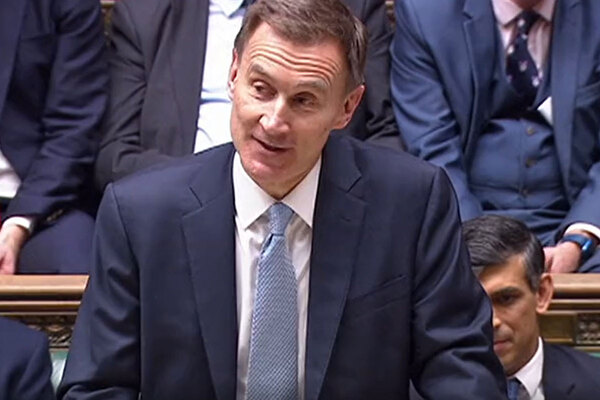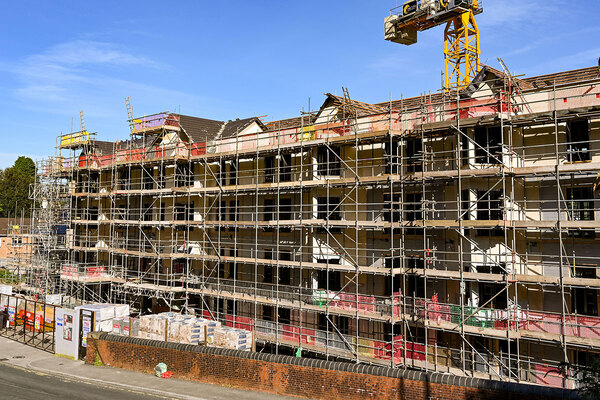Affordable housing investment in England is too low – the figures prove it
John Perry, policy advisor at the Chartered Institute of Housing, talks through some of the key financial takeaways of this year’s UK Housing Review, including figures showing that over half of the government’s capital investment in housing goes to the private market
Half of the government’s capital investment in housing goes towards supporting the private market. The latest calculation is revealed in the Chartered Institute of Housing’s UK Housing Review 2024, published this month, which also shows that England invests proportionately less in affordable housing than is the case in Scotland, Wales and Northern Ireland.
The review’s annual assessment of all forms of government support for new housing investment covers the period from 2021-22 to 2024-25. Over these four years, when £41bn is being invested in total, slightly more than half (51 per cent) is directed towards the private market. This proportion has fallen markedly since these assessments began – in 2018 private market support reached 79 per cent of the capital budget.
Nevertheless, this side of the budget accounts for around £5bn of investment each year. The biggest spending items (see table below) include land and infrastructure funding, Help to Buy equity loans and the Private Rented Sector Guarantee Scheme.
Perhaps surprisingly, on the ‘affordable’ side of the budget, the Affordable Homes Programme accounts for only a little more than a quarter of Department for Levelling Up, Housing and Communities’ (DLUHC) capital spending.
Other large items are the extra borrowing that resulted from the removal of the borrowing caps on local authorities in 2018, and the Affordable Homes Guarantee Scheme (which has been doubled in size since the table was prepared). The assessment excludes investment in existing stock, whether in the private or social sectors.
England is out-of-step with the rest of the UK in directing such a high proportion of investment support towards the private market. The Review shows that capital support for affordable housing supply is much higher in Scotland (90 per cent), Wales (82 per cent) and Northern Ireland (100 per cent), even though comparisons cannot be made strictly on a like-for-like basis. In all cases, the figures have been compiled in consultation with relevant departments.
Other figures in the UK Housing Review show how England has fallen behind other UK countries in affordable housing investment. For example, housing has a consistently lower share of government spending in England (1.8 per cent of total expenditure) than it does in the other three administrations (Northern Ireland is highest at 4.3 per cent).
Assessing delivery in terms of numbers of homes built per 10,000 population since 2008-09 (see charts above), Scotland leads in this measure of affordable output, and England frequently lags behind both Scotland and Northern Ireland.
Programmes for delivering new housing
Support for capital investment in new affordable housing
Source: UK Housing Review
Support for housebuilding and purchases in private market
Source: UK Housing Review
The output from the various programmes in England to support private housing is quite significant. For example, in 2022-23, 10,791 new market homes were delivered through these programmes, with the Help to Buy assisting 26,000 purchases via equity loans and 55,000 households receiving Help to Buy ISA bonus payments.
Nevertheless, there must be a question over whether it is right that Whitehall spends so much of its capital budget on the private sector, especially when such support isn’t deemed necessary in the rest of the UK. Spending on this scale only emerged in England when George Osborne was chancellor, as part of his response to the global financial crisis and its effect on the private market.
But that crisis has long since passed. This imbalance in capital support offers scope for a new government to boost affordable housing investment significantly – with potentially little effect on DLUHC’s bottom line.
John Perry, policy advisor, CIH; and contributing editor, UK Housing Review
Sign up for Social Housing’s comment newsletter
New to Social Housing? Click here to register and sign up to our comment newsletter
The comment newsletter brings you a fortnightly selection of specialist opinion, guidance, and political and economic commentary, from a unique range of leading experts.
Already have an account? Click here to manage your newsletters.
RELATED









